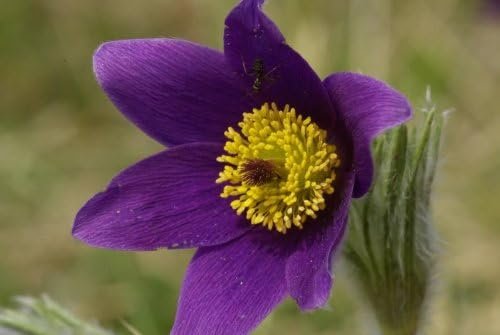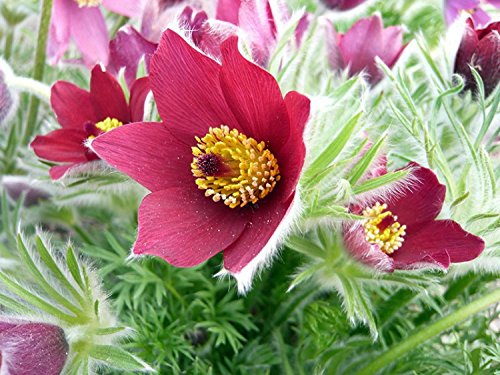Pasque Flower
"Each spring a gardening instinct, sure as the sap rising in the trees, stirs within us. We look about and decide to tame another little bit of ground." -- Lewis Gantt
No flower is quite so welcome as the first one to open in spring. And fortunately for gardeners in the Midwest, some of them are tough enough to bloom even through a snow drift. Spring bulbs like snowdrops, squill and crocus are some of the earliest flowers to open, with daffodils, hyacinths and tulips soon to follow.
Pasque flower, Pulsatilla.
Beautiful bell-shaped flowers -- in shades or blue, violet, yellow and white -- open in March or April and develop plume-like seedheads. Foliage is silvery and covered with hair. Native to prairies, it requires good drainage.
The pasque flower, or pasqueflower, is a deciduous perennial that is found in short clumps in meadows and prairies of North America and Eurasia.
The genus Pulsatilla includes about 30 species, many of which are valued for their finely-dissected leaves, solitary bell-shaped flowers, and plumed seed heads. The anthers are bright yellow and the purple bell consists of sepals.
In its tallgrass prairie habitat, the pasque flower is one of the first plants to bloom in the spring, often before the late winter snows have thawed.
How to Cultivate the State Flower of South Dakota
Pasque Flower is propagated by seed, root cuttings, or division. Seeds can be sown directly in the garden in the fall, where they will germinate during the following spring.
Start seeds indoors in small containers early in the spring to transplant when still small.
Pasque flower may self-seed. One mature plant can be divided into 4 to 6 new plants.



